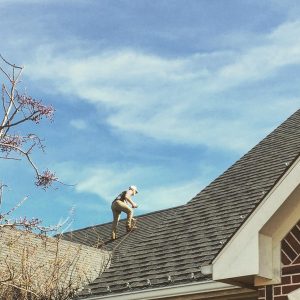
Commercial roof designs largely depend on whether you plan a circulable or non-circulable roof.
A traditional, non-circulable flat roof consists of a concrete base on which the vapor barrier and protective membrane are installed (PVC and EDPM are the most reliable covering solutions nowadays).
On the other hand, a circulable terrace roof means that you can climb on it freely, you can store various equipment, solar panels, but also arrange a green area, a flower garden, a swimming pool, an outdoor café or even a car park – all this are possible in the space offered by a commercial flat roof. Of course, such a roof must also have a structure strong enough to support extra weight. For this, under the waterproofing layer must exist is a very solid, rigid and strong base, able to withstand significant loads.
If a few years ago commercial roofing materials were relatively few and standard, today they are diverse, with superior properties, providing very good protection in any climatic conditions.
What are the properties of these materials and how are they used?
Depending on the needs of clients, commercial roof materials can be used in several systems that generate different properties.
Here are some examples:
System 1: It involves the application of 2 layers of insulation. The first layer consists of a solution with very high elasticity. This layer is applied on the substrate and covers it completely. The system is continued with the application of a very good quality geotextile material that reinforces the liquid membrane, covering the entire surface.
- Such a system is very flexible, and can be used to waterproof any commercial roof
- It has high resistance to ultraviolet rays
- It has a high elasticity
- It can be applied quickly, matching the contour of the construction
- It is designed to withstand extreme weather conditions, including low temperatures
System 2: It is a liquid waterproofing system, applied mechanically, with a roller, being intended for both very large and small surfaces. The application of this system can be done on flat roofs, on galvanized sheet metal roofs, on fiber reinforced concrete slabs as well as on tile roofs.
The material consists of an unplasticized pasty acrylic dispersion that brings the following advantages:
- It is elastic
- It withstands weather well
- It comes in a light color palette, which reflects up to 70% of solar radiation
- It has water vapor permeability
System 3: This is a system for waterproofing attics. It uses a material based on rubber bitumen of a very good quality. This system is often used for fixing joints and for sealing small leaks. The advantages it offers are significant:
- It adheres to a wide variety of materials, from zinc to wood, concrete, aluminum and OSB boards
- It prevents corrosion on the underside of the elements
- It seals very well the surface
- It has a sound-absorbing effect
All these materials must be combined and applied by commercial roofing Dallas contractors in order to benefit from the maximum protection they can offer, as well as the warranties.
